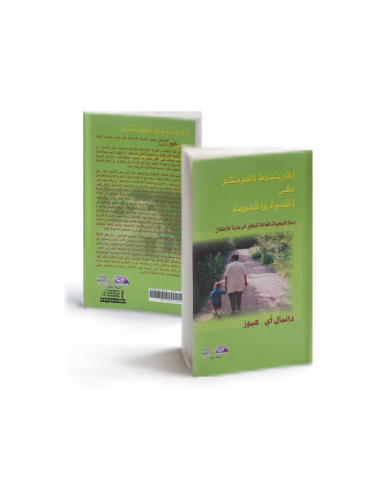Concept of Tampering in Philosophy and Art
This book is a cry of protest against those who rejoice at the death of ideas and doctrines and declare in a foolish trance that existentialism is dead
0 kg - 5 kg
This book is a cry of protest against those who rejoice at the death of ideas and doctrines and declare in a foolish trance that existentialism is dead
The subject of fiction has received clear interest from many philosophers, both idealists and empiricists. We will depart from the subject of our studies if we try to follow the opinions of modern philosophers in this regard
A person has needs in life, and the needs are arranged and gradual, some of them are basic and necessary, some of them touch his physical needs, and they are the ones that preserve his survival and presence in life, and some affect the mental and psychological side, and they help in his advancement, progress and creativity.
"This book has won a firm fan. Ideal for teachers as well as students . . . In an increasingly multicultural world, this is an essential read for anyone wanting to know about religion. Loads of pictures and photos make this easily the best book of its kind." —Jon Hancock, children's book buyer for Borders UK
"This book has won a firm fan. Ideal for teachers as well as students . . . In an increasingly multicultural world, this is an essential book for anyone wanting to know about religion. Loads of pictures and photos make this easily the best book of its kind." —Jon Hancock, children's book buyer for Borders UK
This comprehensive exploration of the interpretive process,
has served as a successful textbook. It focuses on the three "worlds" of biblical interpretation--the world of the author, the world of the text, and the world of the reader--to help students develop an integrated hermeneutical strategy. The book offers clear explanations of interpretive approaches, which are supported by helpful biblical examples, and succinct synopses of various interpretive methods. Pedagogical aids include end-of-chapter review and study sections with key terms, study questions, and suggestions for further reading.
“Daniel Hughes has done more here than translate the science of attachment theory to the general reader. He offers readable, thoughtful, practical tools capable of transforming relationships. 8 Steps to Building Your Best Relationships has the power to change your life.” — Terry Real, founder of the Relational Life Institute (RLI) and author of The New Rules of Marriage
Where did the Bible come from? Author Craig D. Allert encourages more evangelicals to ask that question. In A High View of Scripture? Allert introduces his audience to the diverse history of the canon's development and what impact it has today on how we view Scripture. Allert affirms divine inspiration of the Bible and, in fact, urges the very people who proclaim the ultimate authority of the Bible to be informed about how it came to be. This book, the latest in the Evangelical Ressourcement series, will be valuable as a college or seminary text and for readers interested in issues of canon development and biblical authority.
“[A] practical text for students and professional interested in learning how to parent with attachment in mind…an excellent book, and I would recommend it to every trainee and to parents...” (The Journal of the Canadian Academy of Child and Adolescent Psychiatry)
This book deals with discussing topics at the same time. This may be a possible opportunity and a possible opportunity coincides with a unique opportunity.
Hope is to raise the spirits and arm themselves in the face of all the frustrations that surround modern man
Berdyev's life was nothing but a triangular struggle against the aristocratic environment in which his family belonged and lived in it, against the revolutionary Marxist environment in which he lived during his first youth and against the orthodox environment in which he lived a mature period in a certain sense.
Reidar Thomte's Kierkegaard's Philosophy of Religion is an excellent read for students beginning their study of one of the "greats" of the nineteenth and twentieth century philosophy. Thomte directly appropriates Kierkegaard's insightful language and discussion of theological and philosophical issues that stimulated him, all of which are still alive and well today.
What is art criticism?
What are the boundaries between art criticism and social criticism?
What are the different streams of criticism?
What is the contemporary critical landscape?


















